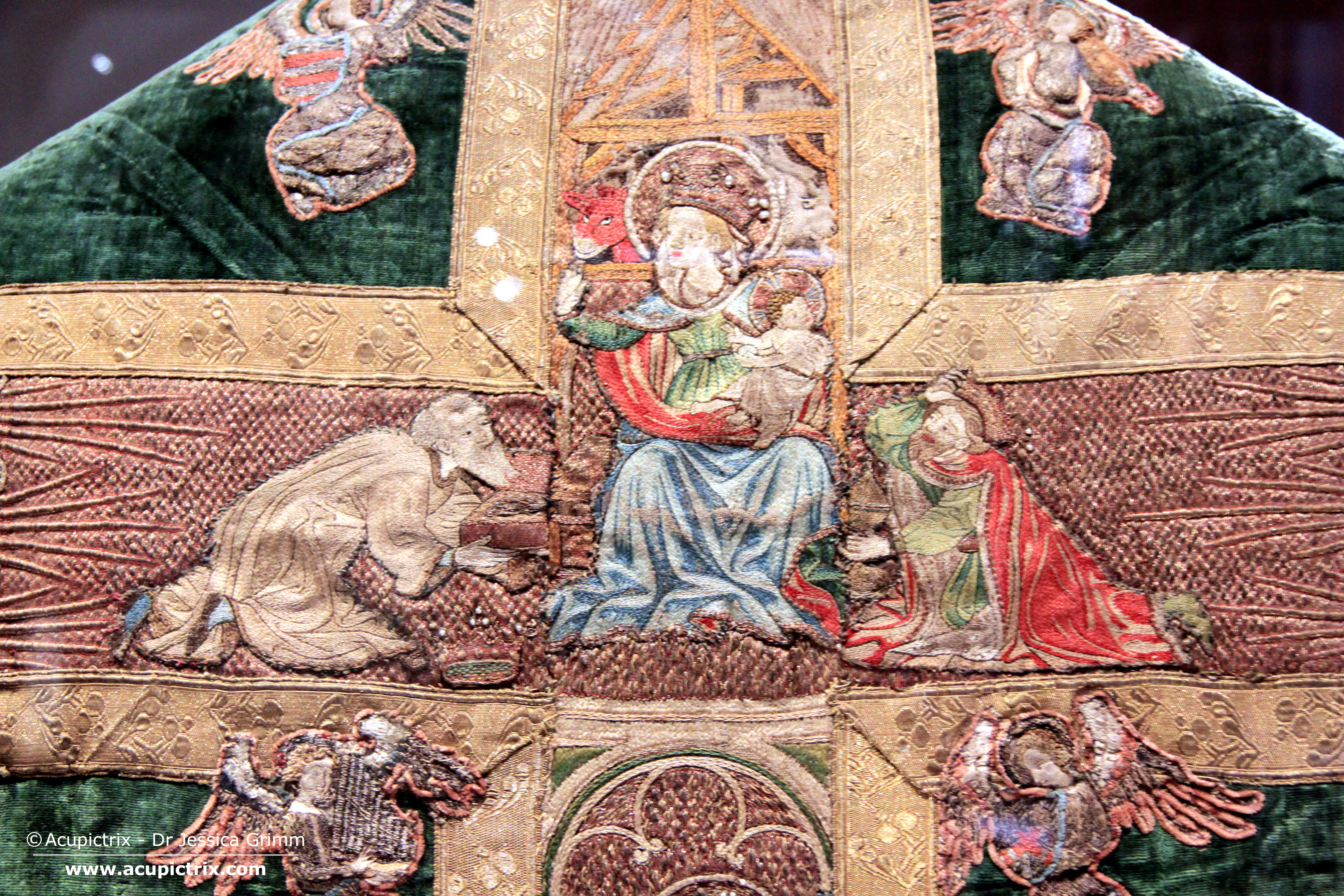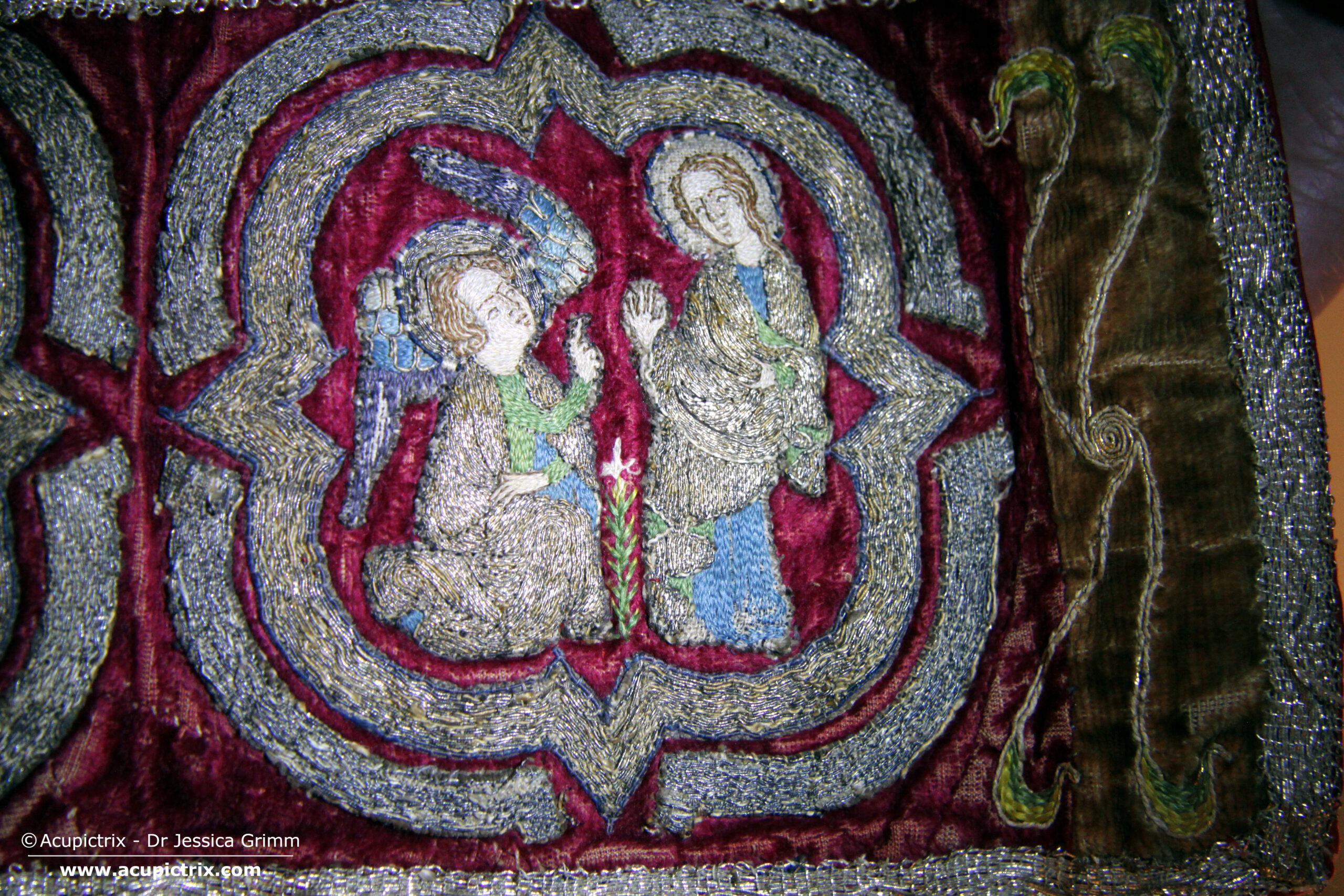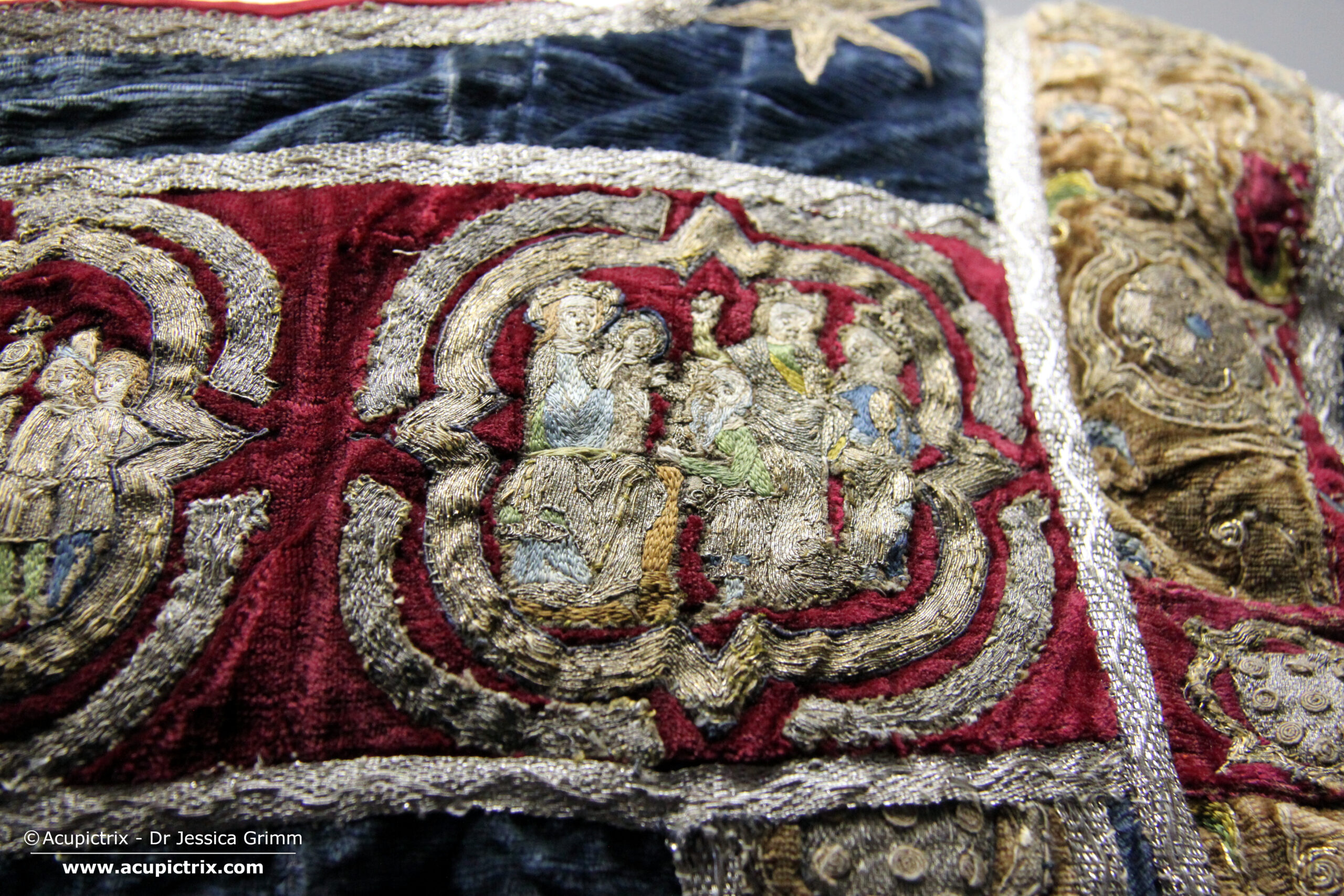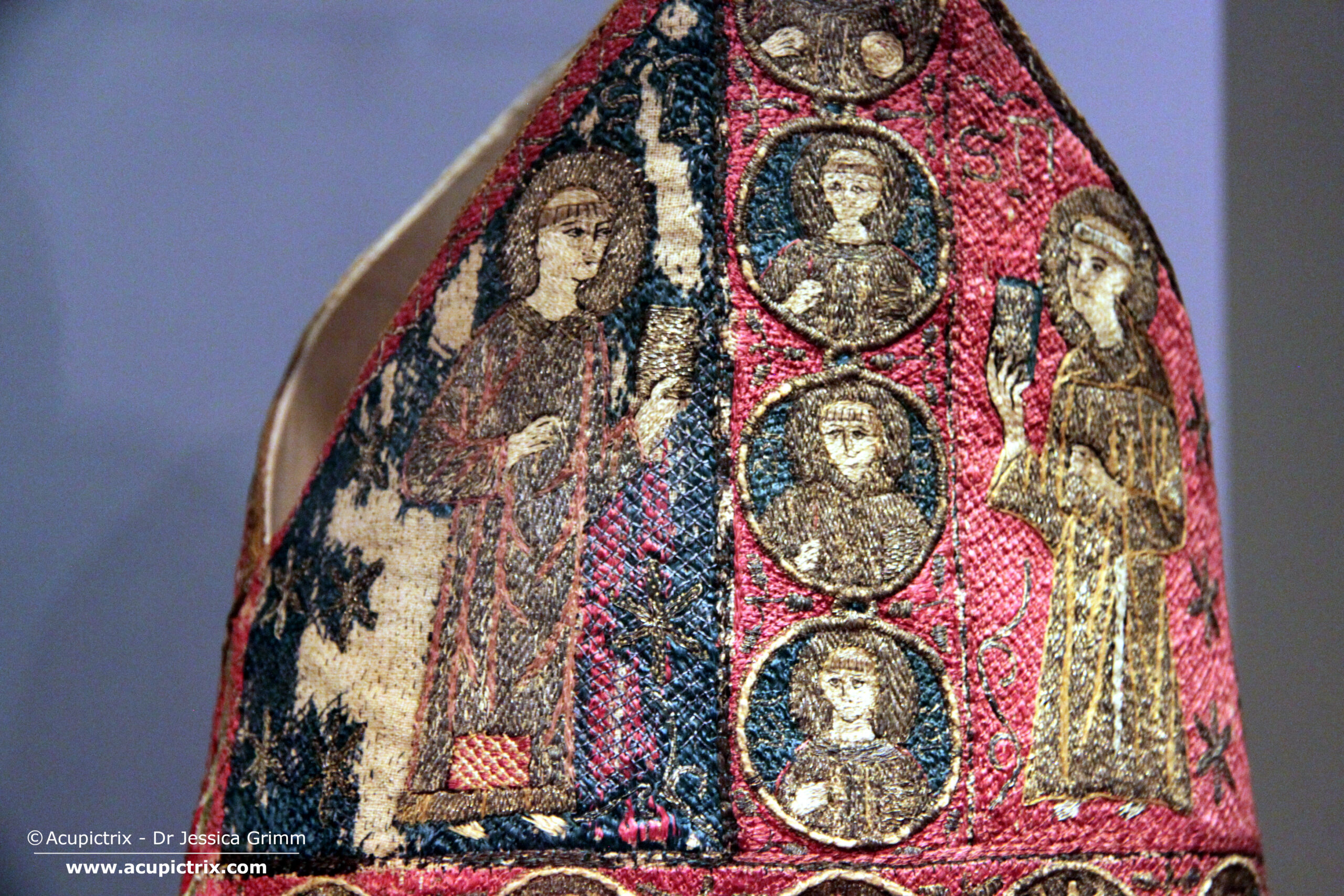We will start the new year with an interesting chasuble I encountered at the Dommuseum Frankfurt. The chasuble features embroidery from Cologne dating to the mid-14th and the second quarter of the 15th century. The museum, housed in the historical cloisters, is well worth a visit. Many medieval vestments are on permanent display, and you are allowed to take pictures. This blog post explores the Schlosser Ornat vestments kept at the same museum.


From the above pictures, you can tell that this green chasuble contains four different textile adornments: embroidered angels (around AD 1350, Cologne), embroidered chasuble cross (2nd quarter 15th century, Cologne or Middlerhine area), a woven Kölner Borte (mid 15th century, Cologne) and a woven golden border (19th century). When the chasuble changed its shape to the more modern fiddleback form, the textile adornments were simply cut off. The original green chasuble had a much wider shape and was adorned with embroidered musical angels and probably a simple golden forked cross. Perhaps over time and not all at once, the embroidered chasuble cross, the column made of Kölner Borte and the woven golden border were added.


The mid-14th-century embroidered angels carry either the coats of arms of the donors or a myriad of musical instruments (fiddle, portative organ, shawm, mandora, psaltery, harp, bagpipes, and rebec). The donors have been identified as Cologne merchant and councillor Johann vom Hirtze and his wife Agnes Hardevust. Their son was a priest who donated vestments to a number of his churches. It is even likely that this chasuble is named in his will.
The angels are very finely embroidered with 38 parallel gold threads per cm. The gold threads follow the contours of the design. The angels are between 10 and 12 cm tall and have cotton padding to plump up their faces and bodies. The fact that not the cheaper membrane gold and the expensive (rare and exotic) cotton padding were used points to a very costly embroidered vestment. The red and blue chenille outlines were added later. Initially, the outlines were made of thick red silk. The angels’ hair is made with small embroidered knots in flat silk.

The embroidered chasuble cross was made around AD 1425-1449, about 75-100 years later than the musical angels. It has nothing to do with the original donors from Cologne. As there are no comparable pieces, it isn’t even certain that it was made in Cologne. The chasuble cross shows the Adoration of the Magi at the top (the scene is cut to fit the new chasuble shape; look at the gifts the Magi hold) and Saint John and Saint Peter below (also cut).

The third Magus can be found just below the central scene. The embroidery is exquisite. The gold thread is of high quality, the split stitching is fine, and freshwater pearls were added for extra bling (most have fallen off, as the whole rim of the nimb would have been covered). The gift the Magus is holding is also very interesting. It has shaped spangles that form the tiles on the roof of his house-shaped box. The embroidery of this chasuble cross is thus also very costly. The movement in the figures also points to a high-end designer—probably a local draftsman and not the embroiderer himself.
Literature
Stolleis, Karen (1992): Der Frankfurter Domschatz: Die Paramente. Liturgische Gewänder und Stickereien 14. bis 20. Jahrhundert. Band I. Frankfurt am Main: Waldemar Kramer. This is an excellent museum catalogue. Most pictures are in black-and-white, but the descriptions are detailed, with many literature links. It has been out of print for a long time, but can be found second-hand.



0 Comments